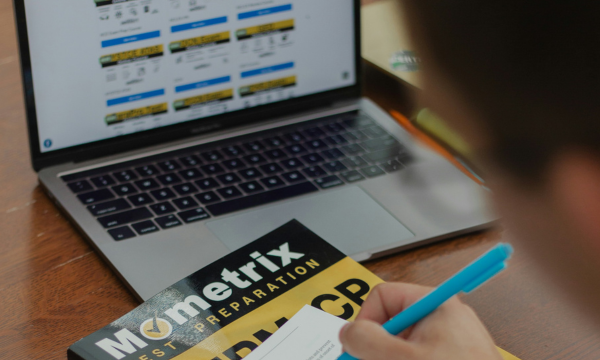Preparing for AQA GCSE English Language Paper 2 in 2025 requires understanding the paper's structure and key strategies. The exam consists of two sections worth a total of 80 marks, with Section A focusing on reading and Section B on writing. For reading, practise techniques like skimming texts for main ideas and carefully analysing language features in your answers to boost your marks. When it comes to writing, ensure you plan your response well, match style with purpose, and proofread for accuracy. With consistent revision and maybe some guidance from the right tutors, you'll be set to excel in this important exam.

The AQA GCSE English Language Paper 2 is designed to assess your reading and writing skills, focusing primarily on non-fiction texts. This paper comprises two sections: Section A, which tests your reading comprehension, and Section B, where you demonstrate your writing abilities. Understanding the structure is crucial, as you will have a total of 1 hour and 45 minutes to complete the exam, which consists of 80 marks in total.
In Section A, you will encounter different types of texts that may include articles, essays, or reports. Getting familiar with these will help you to navigate the questions more effectively. Time management is vital; each question has a specific mark allocation, and knowing this can guide you on how long to spend on each task. For instance, you might want to start with easier questions to build confidence before tackling the more challenging ones.
Section B focuses on your writing skills, so it's essential to use the reading texts from Section A to inform your writing. By analysing how the writers convey their ideas, you can adopt similar techniques to enhance your own work.
Moreover, reviewing past papers can provide insight into question trends and formats, which is invaluable for your preparation. As you revise, keep an eye on any updates to the syllabus or exam format, ensuring you're well-prepared for the 2025 exams.

Understanding the structure and mark distribution of AQA GCSE English Language Paper 2 is essential for effective revision. The paper is divided into two sections, with a total of 80 marks available. Section A focuses on reading comprehension and is worth 40 marks, while Section B is dedicated to writing, also worth 40 marks. This paper accounts for 50% of the overall GCSE grade, making it crucial to grasp its format.
In Section A, the mark distribution varies by question type. For instance, Question 1 offers 4 marks for selecting true statements, whereas Question 4, which involves comparing writers' perspectives, carries a weight of 16 marks.
It's vital to manage your time efficiently; spending about 5 minutes on Question 1 and up to 16 minutes on Question 4 allows for a balanced approach that aligns with the marks available.
Section B requires a different mindset, as it assesses the quality of writing. Devote around 45 minutes here, ensuring to include time for planning and proofreading. The writing task is marked based on clarity, organisation, and technical accuracy. Make sure to use ambitious vocabulary and varied sentence structures to impress the examiner.
To prepare effectively, familiarise yourself with the specific criteria for each question. Using practise papers can help you understand how marks are distributed across tasks, and keeping a checklist of marks can track your progress. This structured approach will not only enhance your confidence but also improve your performance in the exam.
In Section A of the AQA GCSE English Language Paper 2, you'll encounter a variety of texts, including non-fiction articles, letters, and reports. Understanding the types of texts will help you anticipate the style and tone of each piece.
For effective skimming and scanning, focus on headings, subheadings, and any highlighted or bolded phrases to quickly identify main ideas. Use these techniques to extract key information, allowing you to answer questions efficiently.
When reading for meaning, consider the implications of the text beyond the surface. Pay attention to the writer's tone and intended message, which can provide valuable context for answering questions.
Practising summarising skills is essential; try condensing paragraphs into a single sentence to grasp the core message without unnecessary details.
For comparison tasks, develop a strategy that highlights similarities and differences between texts. Look for contrasting viewpoints, and analyse how language and structure contribute to these differing perspectives.
Familiarising yourself with common question types will also enhance your preparation. For instance, know that you’ll need to quote accurately from the texts to support your answers, as evidence is crucial in demonstrating your understanding.
In particular, when analysing language features, identify devices like metaphors and similes, and explain their effects. Reflect on how these language choices evoke emotions or set the atmosphere, making your analysis richer and more insightful.
Lastly, practise answering questions under timed conditions to build your confidence and improve your time management skills. This will ensure that you can tackle the reading tasks effectively on exam day.

When tackling Question 1 of the AQA GCSE English Language Paper 2, it's crucial to understand exactly what the question demands. Your task is to select four true statements from a provided text, so clarity is key.
Begin by carefully reading the statements and the text, ensuring you can distinguish between fact and opinion. Practise identifying true statements across various texts to sharpen your skills.
Develop a method to cross-reference the statements with the text, as this will help you confirm their accuracy. If you're unsure about an answer, use the process of elimination to narrow down your options. Be mindful of common traps and misleading information that can lead you astray.
Time management is also important; aim to spend about five minutes on this question. Practising with example questions will increase your speed and efficiency.
Remember, reading the question thoroughly will help you avoid mistakes, and providing straightforward facts will keep your answers clear and concise. The more you practise, the more confident you'll become in tackling this question effectively.
In Question 2, you will be tasked with summarising the differences or similarities between two texts. Start by carefully reading both sources to identify key points. Look for contrasting ideas, themes, or tones presented by the authors. Practising how to express these differences in your own words is essential, as it not only helps reinforce your understanding but also improves your writing skills.
When structuring your answer, aim for clarity and logic. Begin with a brief introduction that states the main points of comparison, followed by separate paragraphs for each text. Focus on the primary ideas rather than getting bogged down with unnecessary details. This keeps your summary relevant and concise.
Utilising comparative phrases like "in contrast to" or "similarly" can enhance the clarity of your writing. It's also important to support your summary with evidence from the texts; this could be direct quotes or paraphrased information that exemplifies the differences you've identified.
Make inferences when necessary, as some differences may not be explicitly stated but implied through the authors' choices. Practising with various sources will help you become more adept at identifying and summarising these nuances.
Finally, time management is crucial. Aim to complete your response in about 10 minutes, allowing yourself time to review your work and make any necessary adjustments. After practise, reviewing feedback on past answers can help pinpoint areas for improvement, enabling you to refine your technique.
To excel in Question 3 of the AQA GCSE English Language Paper 2, it’s essential to possess a solid understanding of various language techniques such as alliteration, hyperbole, metaphors, and imagery. Familiarising yourself with these elements will enable you to identify them effectively in different texts.
When analysing language, it’s crucial to explain how these choices impact the reader; for instance, how a metaphor might evoke a particular feeling or create a vivid image in their mind. Context plays a significant role as well; understanding the historical or cultural background of a text can enrich your analysis and provide deeper insights into the author’s intentions.
When crafting your response, always support your points with specific examples and quotations from the text. This not only strengthens your argument but also demonstrates your ability to engage closely with the material.
A structured approach to analysing texts can enhance clarity; consider breaking down your analysis into distinct sections, focusing on different language features and their effects. Practising writing clear and concise analyses is key, as is connecting language features to overarching themes or emotions in the text.
Additionally, reviewing successful responses can serve as a useful guide for your own writing. Pay attention to how these examples are structured and the way they incorporate evidence. Don’t forget to time your practise; working under exam conditions will help you improve your efficiency and ensure that you can complete your analysis within the allotted time.
When tackling Question 4 of the AQA GCSE English Language Paper 2, it's essential to grasp how to identify and articulate different perspectives from the given texts. Begin by carefully reading both sources to understand the central themes and viewpoints each writer presents. As you analyse the texts, focus on the language and structural techniques employed by the authors; this will help you articulate how these choices contribute to their perspectives.
To structure your comparative answers effectively, aim to develop balanced paragraphs that cover both texts. This could involve discussing specific ideas in one paragraph and then exploring how the other text presents a contrasting or similar idea. Use linking phrases such as "In contrast," "Similarly," or "On the other hand" to enhance the flow of your comparison, ensuring that your argument remains coherent and well-connected.
It's also crucial to refer back to the question throughout your response, making sure your analysis remains relevant. Practise writing responses under timed conditions to get accustomed to the pacing required, allowing you to cover all aspects of both texts thoroughly. Reviewing mark schemes will provide insight into what examiners are looking for, and reflecting on feedback from past comparisons can further refine your skills. By honing these techniques, you’ll be better prepared to achieve a strong performance in this challenging section of the exam.

In Section B of the AQA GCSE English Language Paper 2, you will be tasked with writing a non-fiction piece that responds to a specific prompt. It's essential to understand the various types of non-fiction writing you may encounter, such as articles, letters, and essays.
Familiarising yourself with the assessment criteria is crucial; this will help you know what the examiners are looking for. Before diving into your writing, take some time to plan your response. This planning phase is vital for organising your thoughts and ensuring coherence in your piece.
Practicing different writing styles will also benefit you greatly. Each type of non-fiction demands a unique tone and approach. For instance, a letter may require a more personal touch, while an article might need a formal tone.
Tailoring your style to suit the audience and purpose of your writing is key. To engage your readers effectively, use varied vocabulary and sentence structures. This not only keeps your writing interesting but also demonstrates your linguistic skills.
Clarity and coherence are paramount; ensure that your ideas flow logically and that you communicate your message clearly. Spelling and grammar are equally important, so always take a moment to proofread your work before submitting it.
This will help you catch any errors that could detract from your overall score. To build your confidence, practise writing under timed conditions. This mimics the pressure of the exam and helps you manage your time effectively. Reviewing past successful responses can offer valuable insights and inspiration for your writing, giving you a clearer idea of what works well.
Understanding the writing prompt is key to success in this task. Make sure you know the audience you are addressing and what they expect from your piece. Spend the first few minutes brainstorming ideas, jotting down thoughts quickly to help you plan effectively. A strong opening is essential; consider starting with a compelling statement or a thought-provoking question to engage your readers right away.
As you develop your ideas, ensure they flow logically throughout your piece. Use examples or personal anecdotes where appropriate to illustrate your points and make your writing more relatable. A clear conclusion will tie everything together, reinforcing your main ideas and leaving a lasting impression on your audience.
To keep your writing engaging, practise using a variety of sentence types. This adds rhythm and interest to your work. Before submitting, take a moment to review your writing for any technical errors in spelling, punctuation, and grammar. To prepare effectively, simulate exam conditions by timing your practise sessions, and don’t forget to seek constructive feedback on your drafts to identify areas for improvement.
Creating a revision timetable is vital. This helps you cover all areas of the syllabus systematically, ensuring no topic is overlooked. Aim to allocate specific time slots for each section of the paper, including both reading and writing tasks.
Utilising past papers is another excellent strategy. Familiarising yourself with the styles of questions asked will boost your confidence. Try to practise answering these questions under timed conditions, simulating the exam environment to improve your time management skills.
Consider joining a study group. Collaborating with peers allows you to discuss challenging topics, share resources, and gain different perspectives on the material. It can make revision more engaging and less isolating.
Flashcards are a handy tool for memorising key terms and concepts. Write down definitions, examples, or important quotes that you can easily review. This method aids retention and helps reinforce your understanding.
Seek constructive feedback on your answers from a tutor or teacher. Their insights can highlight areas for improvement that you might not notice on your own. Regular feedback can guide your revision and enhance your writing skills.
Don't forget to incorporate regular breaks into your study routine. Short breaks can help maintain your focus and prevent burnout, allowing you to return to your studies refreshed.
Maintaining a positive mindset is essential. Trust in your abilities as you revise. A confident attitude can significantly impact your performance.
Set specific goals for each session. Whether it's mastering a writing technique or analysing a text, having clear objectives keeps you motivated and focused.
Lastly, make the most of online resources and revision guides. These materials can offer additional explanations and practise opportunities, reinforcing your learning and understanding.
Create a revision timetable that covers all areas of the syllabus.
Use past papers to familiarise yourself with question styles.
Practice answering questions under timed conditions.
Join study groups to discuss and share insights with peers.
Use flashcards to remember key terms and concepts.
Review your answers with a tutor or teacher for constructive feedback.
Incorporate regular breaks into your study routine to stay fresh.
Stay positive and confident in your abilities as you revise.
Set specific goals for each revision session to stay focused.
Utilise online resources and revision guides for additional support.

The Degree Gap provides invaluable support for students preparing for their GCSEs, particularly in English Language. With a team of qualified tutors holding PGCE and QTS qualifications, students receive high-quality instruction tailored to their individual learning needs. Recent graduates from top universities bring fresh perspectives and innovative teaching methods, making lessons engaging and relevant. Personalised assistance is key; each student can benefit from targeted strategies designed to enhance their understanding of complex topics, making challenging concepts more accessible.
Creating a supportive learning environment is essential for boosting students' confidence. Tutors encourage questions and foster an atmosphere where students feel comfortable expressing their thoughts. Regular feedback is provided to help track progress, allowing students to identify areas for improvement and celebrate their achievements. Flexible scheduling accommodates students' busy lives, ensuring they can fit tutoring sessions into their routines without added stress.
In preparation for assessments, an emphasis on exam techniques equips students with the skills needed to excel. Access to a wide range of resources enriches the learning experience, from practise papers to video tutorials that can be revisited at any time. Group sessions encourage collaboration and peer support, allowing students to share ideas and learn from one another. Altogether, this comprehensive support structure helps bridge the gap, ensuring students are well-prepared and confident for their exams.
As you prepare for the AQA GCSE English Language Paper 2, it's essential to adopt effective revision strategies that resonate with your personal learning style. Creating a structured revision timetable can help you manage your study sessions and ensure you cover all necessary topics. Try to incorporate active learning techniques, such as summarising key points and teaching the material to someone else, which can reinforce your understanding.
Practise with past papers to get a feel for the exam format and types of questions you’ll encounter. Breaking down topics into smaller, manageable chunks can make studying less overwhelming and enhance comprehension. Utilise a variety of resources, including videos and study guides, to keep your revision engaging and comprehensive.
Stay organised by keeping your notes and materials in one place, allowing you to easily access what you need for each session. Setting specific goals for each study period can help maintain your focus and drive. Regular self-assessment is vital; quiz yourself on what you've learned to gauge your understanding and pinpoint areas needing further work.
Mnemonic devices can also be a useful tool for memorising key facts or concepts. Finally, remember to maintain a balanced routine. Taking breaks is crucial to avoid burnout and keep your mind fresh. By implementing these strategies, you’ll enhance your confidence and readiness for the exam.
For Paper 2, concentrate on non-fiction texts and how their writers present ideas and viewpoints. Key areas include understanding the writer's purpose, tone, and audience. Familiarise yourself with the structure of argumentative and persuasive writing.
Practice past papers under timed conditions. Focus on understanding mark schemes so you know what the examiners are looking for. Additionally, try to manage your time wisely during the exam to ensure you can answer all questions.
You will encounter questions that ask you to analyse and compare texts, explain the effect of certain language choices, and express your own opinion in a writing task. Familiarise yourself with both the short-answer and extended-response questions.
Yes, adopt a systematic approach: identify key themes, highlight language features, and consider the writer’s intent. Make notes on how these choices affect the reader. Using quotes to support your points can also strengthen your analysis.
Practice is crucial. The more you engage with various texts and past exam questions, the more comfortable you'll become with the structure and expectations of the exam. Regular practise builds confidence and refines your skills.
TL;DR AQA GCSE English Language Paper 2 comprises two sections: Reading and Writing, totalling 80 marks with a 1 hour 45 minute duration. Section A includes four questions focusing on reading comprehension and analysis, while Section B requires crafting a non-fiction piece. Key tips for revision include skimming texts, careful planning, and technical accuracy. The Degree Gap offers qualified tutors to help students with tailored support. Effective preparation and understanding the exam structure are essential for success in the 2025 exams.
Fill in this short form and one of our team members will be in touch within 24 hours. No commitment — just honest advice and a clear plan forward. Or call us now!